Gone are the days when marketers were obsessed over a single keyword in an effort to get good rankings. Today, the key to crafting amazing content is context. And for good reason: over 15% of Google’s daily searches are new terms that users have never searched before. And with trillions of searches being conducted every year, that adds up to a lot of new queries.
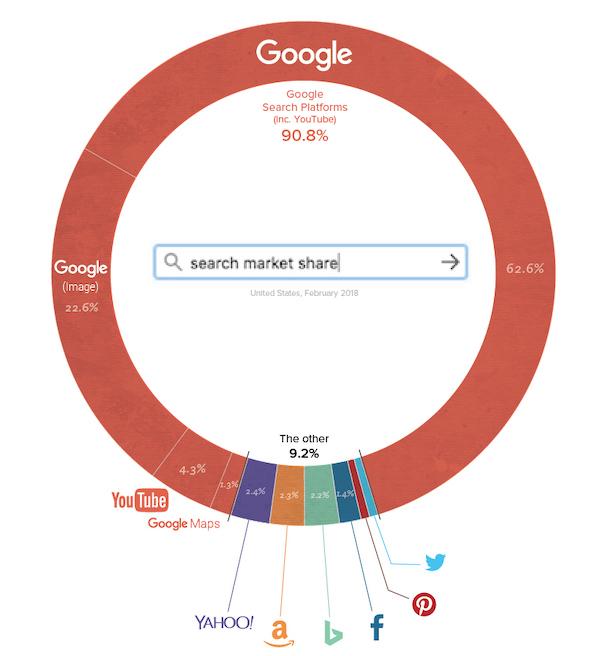
Source: Visual Capitalist
With Googlers finding so many different and unique ways of searching for common issues, this is precisely the reason why LSI keywords have become such a large part of Google’s ranking factors. From an SEO perspective, using LSI keywords has very positive results. By using them in your content, you will be able to boost its contextuality and improve your search visibility.
In this article, I’m going to provide everything you need to know about LSI keywords so that you improve your SEO, drive more relevant traffic to your site, and attract more customers. I will cover:
- What LSI keywords are;
- The key benefits of LSI keywords;
- What LSI means for SEO;
- Tools you can use to find related keywords; and
- How to incorporate them into your content.
You’ll finish reading with not only a clear understanding of why LSI keywords are so crucial to content marketing and SEO; but also the tips and tools to implement them in your own strategy.
So if you’re ready, let’s get started.
What are LSI keywords?
Google has been talking about the importance of LSI keywords since 2015. However, they haven’t spent a lot of time explaining to Internet marketers exactly what LSI keywords are.
LSI stands for Latent Semantic Index(ing). This is a computer program that is designed to learn a wide variety of synonyms based on context. It’s a method that uses mathematical techniques to find relationships between words and concepts within a piece of content.
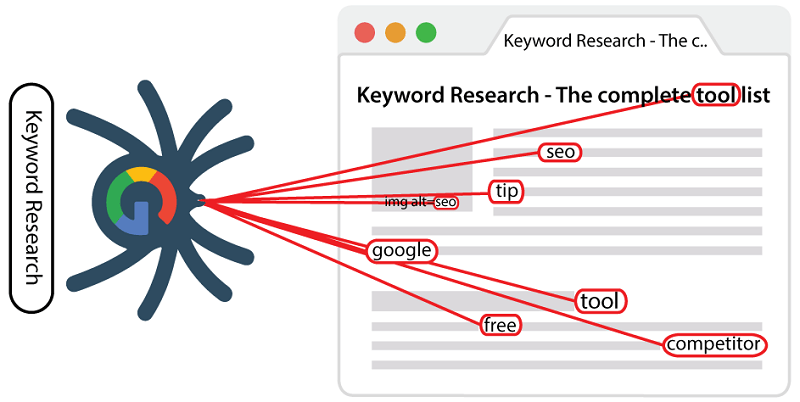
Here’s a more practical definition of LSI keywords:
In terms of SEO (search engine optimization), LSI keywords are search terms related to the main keyword you are targeting. They help to support your content and add more context to make it easier for both users and search engines to know what your content is about.
Both the above and below are examples of suitable LSI keywords for this post’s primary keyword, which is “LSI keywords”:
- What are LSI keywords
- LSI keywords examples
- How to use related keywords
- Tools to find LSI keywords
- Do related keywords affect SEO
- Semantic keywords
As you can see, each of the phrases above is suitable for accompanying the main keyword (“LSI keywords”).
Don’t worry if this sounds a little complicated (especially since our keyword includes the word “keyword”). Later on, we’ll look at the different ways to easily find LSI/related keywords, as well as how you can use them in your content to appear higher and more frequently in relevant search results.
Are LSI keywords the same as synonyms?
While some LSI keywords can be synonyms, not all synonyms are LSI keywords. The majority of LSI keywords are words and phrases that are closely related to your main keyword. So, using synonyms in your posts can help your article’s on-page SEO, but synonyms aren’t LSI keywords.
For example, a synonym for the word “jacket” would be “coat”. However, LSI keywords for “jacket” would include words like: reversible, winter, feather down, warm, padded, puffer, and so on.
A good way to understand the difference between synonyms and related keywords is to perform a Google search. The suggested searches that appear in the drop-down menu are LSI keywords:
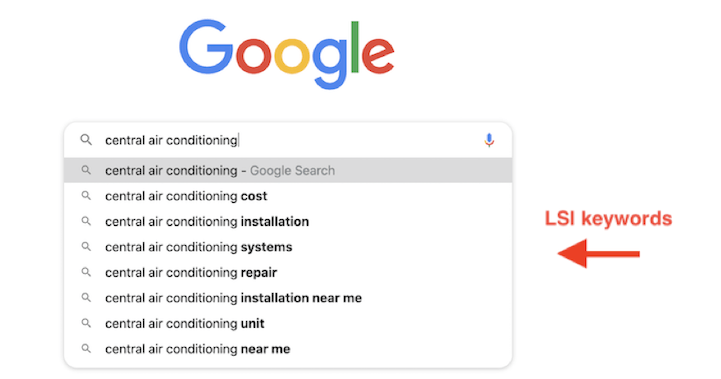
What are the benefits of using LSI keywords?
As I mentioned in the introduction, there are hundreds of thousands of Google queries performed each year that have never been searched. Google has made improvements to its algorithm to factor in context so that it can better understand related keywords. Google said:
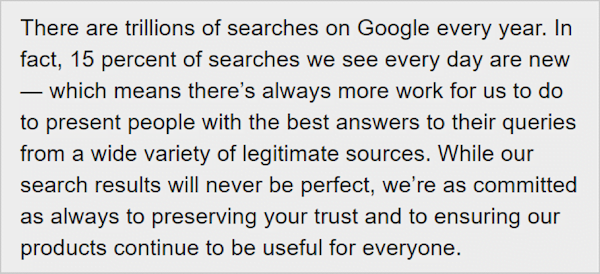
Incorporating LSI keywords into your content boosts the contextuality of your content and yields SEO benefits:
- They boost your website’s ranking in search engines: Sprinkling LSI keywords throughout your text helps search engines to understand your page and boost its ranking power.
- Semantic keywords improve your content’s relevance: Adding related words also helps to ensure you don’t overload your content with keywords, aka keyword stuffing.
- Related words increase the number of people who find your content: LSI keywords also help you provide a better search experience for users, which, in turn, translates into improvements in various ranking factors, such as time spent on a page, bounce rate, and more.
Do LSI keywords have any disadvantages?
LSI keywords don’t necessarily have any disadvantages, but the indexing method does have some limitations. For example:
- It doesn’t consider the order of words and disposes of all conjunctions and prepositions.
- It considers words to have just one meaning.
- It does not recognize underlying ideas and irony. In some cases, the meaning of the words may not match the meaning of the text.
When did LSI keywords become relevant?
If you’re wondering when LSI keywords became relevant, it all began in 2004 when latent semantic indexing was implemented in Google’s search algorithm. Its purpose was to assist the search engine in providing users with more relevant results.
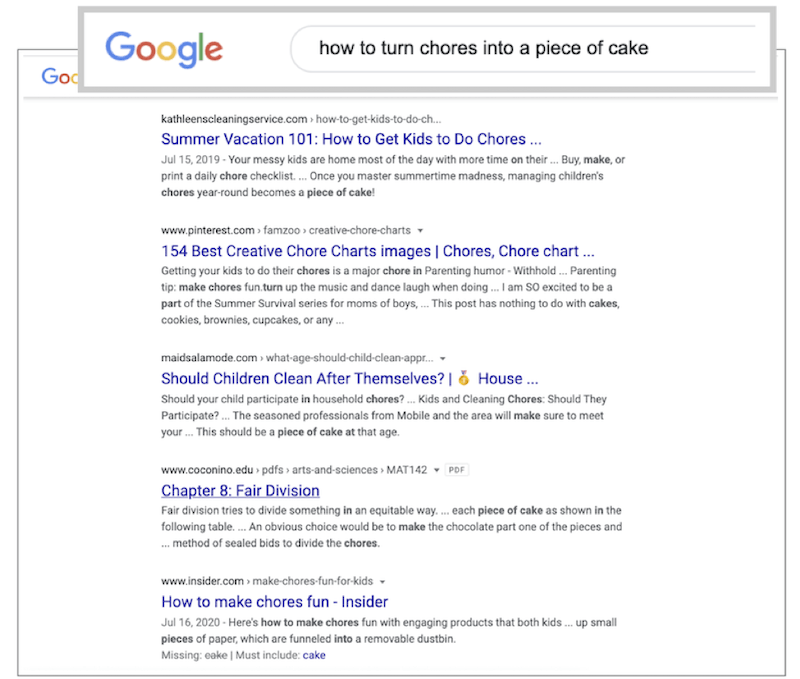
Google can produce relevant results for even figurative language.
But, Google wasn’t just focused on keywords. The search giant also wanted to understand anchor text in hyperlinks, as well as groups of sites that link to each other (also known as SEO neighborhoods).
With all this in one algorithm update, Google dramatically changed the way it delivers search results.
No longer was the search engine targeting exact-match keywords in web content. Now the algorithm could understand context and synonyms. Instead of looking at a single keyword and its frequency of use to find out what the page was about, Google could now analyze everything offered on the page.

To better understand the impact of this change, let’s take a deeper dive into LSI keywords and their relationship to SEO.
The Impact of LSI keywords on SEO
In the early days, Google’s crawlers, also known as “spiders”, would automatically find and scan websites by crawling from one link to another on connected web pages. As they crawled, they would look at the keywords on a page to help them identify its topic.
For example, if you were to publish a post titled “21 Tips For Effective Email List Segmentation,” Google would scan your page to determine if you used the term “email list segmentation” in key areas on your website, including:
- The title tag,
- Content body,
- Image alt text,
- H1 heading, H2 and H3 subheaders, and so on.
But, after the LSI update, Google’s crawling method changed, resulting in these SEO improvements:
Google understands pages better
In addition to scanning your page for the main keyword, now it would also scan your page for various related keywords, such as: “email campaign,” “MailChimp,” “audience,” “subscribers,” “email tools,” and so on. What this means is, Google works to find out what the overall topic of a page is, and relies on latent semantic indexing to understand the content at a much deeper level than simply looking for multiple occurrences of a specific keyword.
Google reads pages contextually
Basically, Google’s algorithm now has the ability to “read” a page the same way a human would, and categorize keywords depending on the determined context. This means that the search engine can now differentiate between words based on even the smallest details (which is why keyword mapping is important). For instance, it can now tell the difference between literal and figurative expressions, like:
“Don’t shoehorn LSI keywords into your content if they are not relevant.”
vs
“Use a shoehorn to protect shoes when you put them on.”
Google can generate even more relevant results
According to this recent research paper from Google, they identify words that frequently occur together to help the bots more easily understand the main topic of the pages it scans. With more accurate categorization, results are even more relevant.
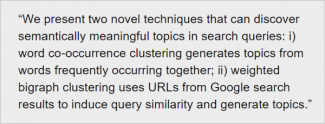
Google incorporates the overall picture of your business
In addition to that, their algorithm is designed to weigh your business name, website, and industry to help Google get a well-rounded understanding of each page on your site as it relates to your business as a whole.
Now can you see why LSI keywords have become such an important part of the search engine’s algorithm?
Google’s main goal is to provide searchers with the most relevant results it can—even for the 15% of search terms that have never been searched before. That is an amazing standard of quality which would be impossible for the search engine to achieve without latent semantic indexing.
Does YouTube use LSI keywords?
Interestingly, it should be noted that even though Google owns YouTube, they primarily run on two different search engines and algorithms. What I’ve found surprising is that it doesn’t seem that, at the time of this writing, YouTube utilizes LSI keywords for rankings.
As a YouTube creator myself, I try to include primary keywords in the titles of my videos and rarely pay attention to LSI keywords, and the videos still rank well. The only place I’d be able to put them is in the description of the video, but it doesn’t seem like it’s required.
So while YouTube searches do pull up related suggestions, there aren’t many places to insert LSI keywords.
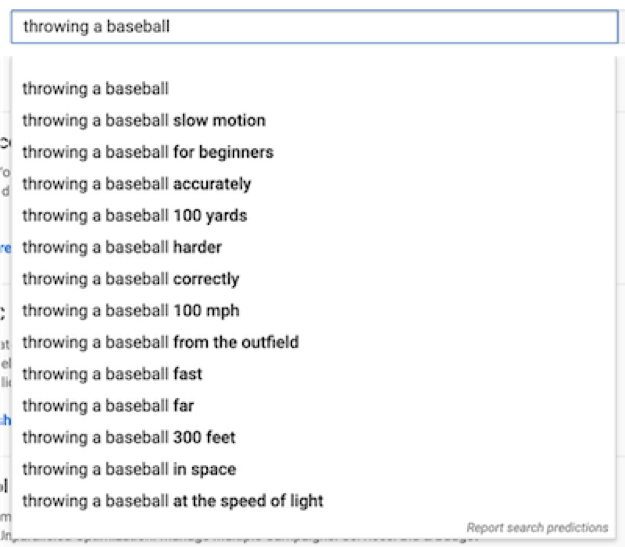
Related/LSI keywords on YouTube, from our How to Get More Views on YouTube blog post.
YouTube SEO relies mainly on high-quality editing to increase engagement and the click-through rate of the thumbnails. Of course, I’m over-simplifying a complex algorithm, but it’s a universally accepted truth that high-quality editing, rather than LSI keywords, is the biggest factor in YouTube’s algorithm.
So although LSI keywords seem to be an important factor on the Google search engine, they are not as important in the YouTube search engine.
With that, let’s move on to the next section where you’ll discover 5 effective tools to help you find LSI keywords to use in your posts.
How to find related keywords with LSI keyword tools
The first step in finding LSI keywords is to create a base of important keywords for your business. Once that’s done, coming up with related keywords will be easy. All you need is to do a little bit of research to uncover endless possibilities—and for that, you need tools. Here are five LSI keyword tools you can use to find suitable selections of related words.
1. Google Autocomplete
Google’s instant search feature is the simplest way to find keywords related to your main one. All you need to do is type your target keyword into Google’s search box and you will get a range of predictions as to what you might type next.
Look for the words that appear in bold as suggestions. Make a list of the ones that are relevant to your topic and incorporate them into your content.
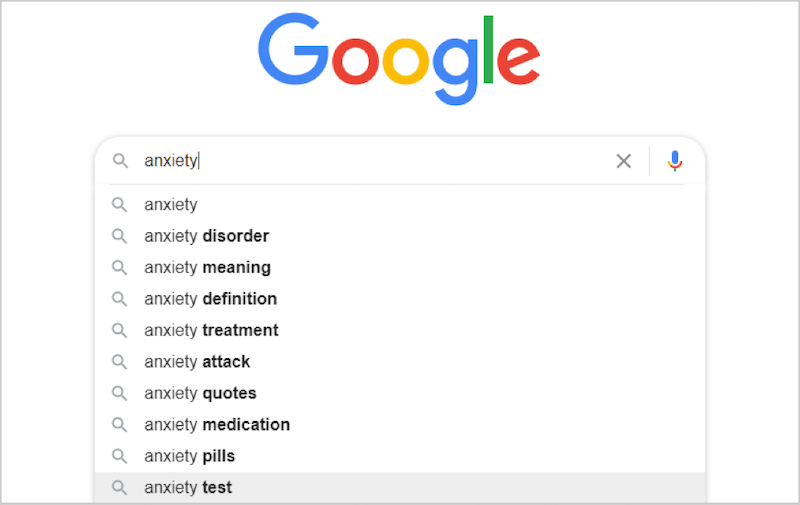
2. Google Related Searches
You can also type your main keyword into Google and then scroll down to the bottom of the page to find the “Related Searches” section. Check out the listed terms to get more ideas for LSI keywords for your content.
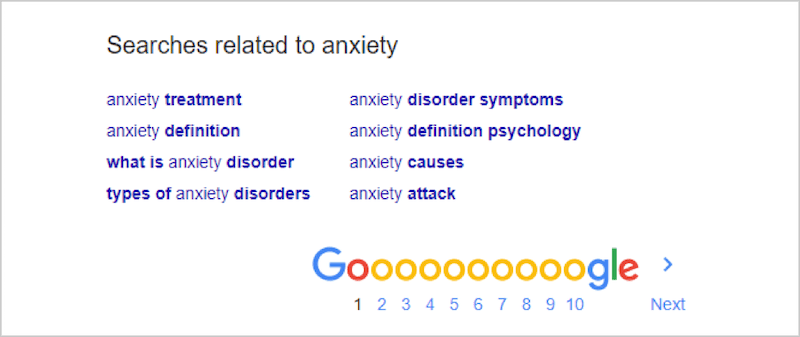
3. People Also Ask
Yet another amazingly effective yet free resource, the “People Also Ask” box in the search results page will provide you with tons more options. You can go into a few of the results to see if there are any additional words you can use. Look for the ones that are bolded, as in the example below.
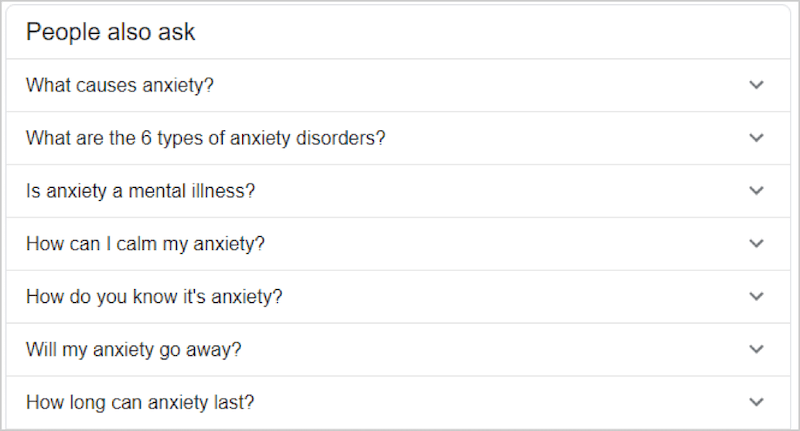
4. LSI Graph
LSI Graph is a free LSI Keyword Generator that helps you quickly find all the terms related to your primary keyword. Simply type in your page’s main keyword and you’ll get a list of LSI terms to choose from.

5. Serpstat
Serpstat is yet another effective tool that helps you find semantically related phrases for your posts. Simply enter your main keyword and click SEO Research > Related Keywords. You will be presented with a long list of words and phrases to choose from.
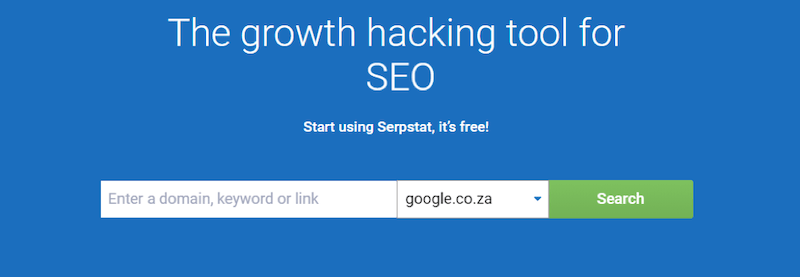
Of course, there are many other related keyword finders out there, including Ahrefs and Moz SEO tools. These are great because they not only provide you with a comprehensive list of related keywords that people typically search for on the topic, but they also allow you to filter the words and phrases by connection strength, search volume, and cost per click.
Now that you know how to find LSI keywords using free keyword research tools, let’s look at the best ways to use them in your content and SEO strategy.
How to use LSI keywords for SEO
The keyword generation tools mentioned above will provide you with a long list of suitable LSI keyword options for your content. Now it’s time to add them to your content and experience SEO‘s important benefits.
Choose LSI keywords best suited for your topic
Before you determine how to incorporate LSI keywords into your text, you need to identify the ones best suited for your topic. For instance, if you were writing a blog post targeting the main keyword “blog SEO”, the tool you’re using might spit out an endless list of options, including:
- Blog seo checklist
- Seo blog topics
- blog post seo tips
- Seo blogs for beginners
- what are the advantages of seo
- Seo blog meaning
- Seo plugins for bloggers
- How to write seo friendly post
- blog seo for beginners
- Seo latest trends
- how to optimize your post for seo
- …and so on.
As you can see, most of these are good (depending on the context).
If you were creating a blog post for WordStream on the benefits of blogging SEO, you would pair the main keyword, “blog SEO” with relevant phrases like “what are the advantages of SEO” and “blog SEO for beginners”.
On the other hand, if the post was about the different ways to optimize your blogging SEO, you would choose LSI phrases like “how to optimize your post for SEO” and “X blog post SEO tips”.
Look at the total monthly search estimate
Sometimes, determining the best LSI keywords for your phrases can be really difficult, as some suggestions may make sense as a completely different post altogether.
For example, if you were writing a post about “online course platforms” you’d see LSI keyword suggestions like “online course learning platforms.”
When this happens, you need to determine if the suggestion would make better sense as an individual article, or as an addition to the original post. For me, I usually look at the total monthly search estimate to decide whether it’s worth it to write something new, or include the suggestion as a part of the original article I’m researching.
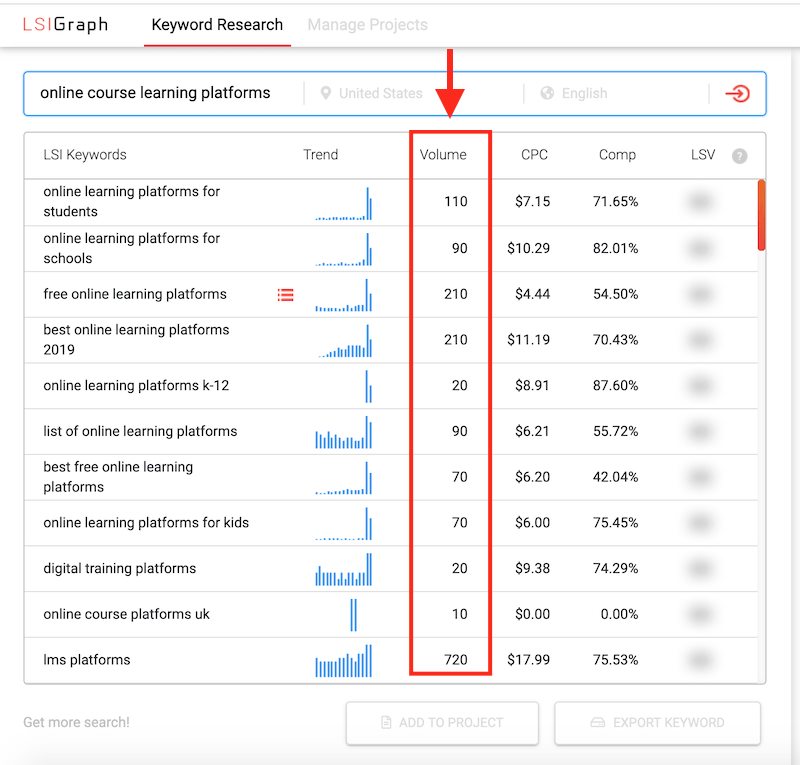
The keywords that your tool offers will work for different contexts, and you need to determine which ones will work best for the specific page you’re creating.
During your research, if you come across keywords that don’t fit your page, you can still make a note of them to use on different pages so you can improve the overall SEO of your website.
Add LSI keywords to your page
You should add your LSI keywords to the same places you would add your main keyword, including:
- Meta title and meta description
- Headings (H1, H2, H3)
- Image alt tags
- Throughout the body text
Make sure you sprinkle related words and phrases throughout your post in a natural-sounding way. This will help broaden your opportunities since you can’t use the main keyword over and over again in all the important areas of your page.
Focus on user experience
Don’t overuse LSI keywords in your content. While these aren’t your keywords, exactly, it’s still quite easy to overuse them—and if you do, you will get penalized for it. You want to include enough related words to make the context of your page immediately clear to Google and other search engines, but without ruining the reader’s experience.
To do this effectively, you must add related keywords while keeping the content cohesive, natural-sounding, and easy to follow. This will help you not only avoid penalties but also to improve your visitors’ experience and ultimately, make money while blogging.
Final tips for using LSI keywords for SEO
Here are some general rules for implementing related words in your content to enhance your SEO strategy:
- Don’t go overboard with the use of synonyms
- Write how you speak. If you wouldn’t say it in real life, it doesn’t belong in the text
- Use a fixed ratio of related words and phrases to the rest of your content (eg. one LSI keyword for every 200-300 words)
Although having a ratio such as the one above isn’t perfect—and it certainly doesn’t guarantee that you will rank for any of your chosen LSI keywords–it is a helpful guideline to get you going in the right direction.
Regardless of how often you use LSI keywords, your main priority should always be to offer clear, concise, and useful information that helps readers find the answers and solutions they seek (while also helping you achieve your business objective of transforming readers into paying customers, of course).
If you write with the aim of providing value first, you’ll find that you wind up using related keywords in a natural way throughout your text without making any conscious effort.
Incorporate LSI keywords into your content and SEO strategy
Google has made great strides in artificial intelligence and machine learning. In fact, it’s quite scary just how smart Google has become!
The search engine uses LSI keywords more and more to find the context of any piece of content, and that’s why it’s worth spending the time to learn about how to leverage these valuable keywords in your SEO strategy and content marketing campaigns.
This post has given you all the information you need about what LSI keywords are, why they are important, how to find them, and the different ways you can use them to improve your overall presence online. Now it’s time for you to take action. Find a piece of content on your website that you can rework and improve using the tips you’ve learned in this post.
Are you already incorporating LSI keywords into your content? Let us know in the comments below!







